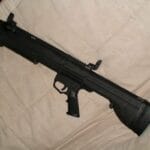Centerfire bullets, commonly used for hunting and target shooting, can travel surprisingly far—potentially miles. Understanding the factors that influence a bullet’s range and adhering to safe shooting practices is crucial for everyone’s safety. This article delves into these factors, explores the concept of “dangerous range,” and provides essential safety tips for responsible firearm handling.
Factors Influencing a Bullet’s Journey
Several key elements determine how far a centerfire bullet can travel:
Caliber
Caliber refers to the bullet’s diameter. Larger calibers, often used in hunting rifles, generally travel farther than smaller calibers found in many handguns. This is partly due to the increased mass and momentum of larger bullets. For more information on specific calibers, see how far a .22 bullet travel and .50 cal bullet can travel.
Bullet Design
Bullets are designed for different purposes. Streamlined bullets, resembling tiny missiles, are optimized for long-range accuracy. They cut through the air more efficiently, achieving greater distances. Hunting bullets, conversely, are designed to expand upon impact, maximizing energy transfer to the target but potentially reducing range.
Firing Angle
The firing angle significantly impacts horizontal distance. A 45-degree angle generally yields the greatest horizontal range. Angles above or below 45 degrees will shorten the horizontal distance. Firing straight up, while sending the bullet high, results in minimal horizontal travel.
Environmental Factors
Wind speed and direction, temperature, and altitude subtly influence a bullet’s trajectory and maximum range. Long-range shooters often account for these factors to achieve pinpoint accuracy over vast distances. Higher altitudes, with thinner air, may slightly increase a bullet’s range due to decreased air resistance.
Essential Safe Shooting Practices
Knowing a bullet’s potential range is only the first step. Implementing safe shooting practices is paramount:
Utilizing a Robust Backstop
A solid backstop is essential for range safety. This could be a thick earthen berm, a purpose-built bullet trap, or a steep, rock-free hillside. The backstop’s function is to stop bullets, preventing them from leaving the designated target area. This is non-negotiable.
Comprehensive Awareness of Surroundings
Before firing, thoroughly assess the area beyond your target. Identify any houses, roads, or people downrange. Even with a close target, misses or ricochets can send bullets much farther than intended. Careful assessment and a clear line of fire with a safe backdrop are essential.
In-Depth Firearm Knowledge
Every firearm and ammunition combination is unique. Understanding your specific setup’s capabilities, including its range and bullet behavior at different distances, is crucial. Consult the owner’s manual, seek advice from experienced shooters, and consider a firearms safety course. Knowledge is power in safe gun handling.
Understanding “Dangerous Range”
“Dangerous range” refers to the absolute furthest a bullet can travel under ideal conditions. This information is vital for safe shooting, enabling informed decisions about shooting locations and times to prevent unintentional harm. Knowing the dangerous range of different firearms, such as a .22 or .50 caliber, is especially important.
Real-World Scenarios and Importance
Tragic accidents from stray bullets emphasize the importance of understanding maximum range and practicing responsible firearm handling. Shooting in the air, though seemingly harmless, can cause injury or death when the bullet descends, potentially retaining enough velocity to inflict harm. For a deeper understanding of the furthest a bullet can travel, explore this article on longest bullet travel distance.
Delving into Ballistics
For those intrigued by the science of bullet flight, concepts like ballistic coefficient (a measure of a bullet’s aerodynamic efficiency) and sectional density (mass relative to diameter) provide deeper insights. Online ballistic calculators can help explore bullet trajectories under various conditions. It’s worth remembering that this is not settled science, and ongoing research continues to refine our understanding of ballistics.
Respecting Firearm Power
Safe firearm ownership hinges on respecting these tools’ potential power. Understanding bullet travel, being aware of surroundings, and adhering to safe shooting practices ensures that shooting sports remain enjoyable and safe for all. For a fascinating exploration of a different kind of journey, consider the Hadestown plot, a captivating musical tale. And if you’re interested in HVAC efficiency, understanding high superheat and low subcooling is crucial.












1 thought on “How Far Can a Centerfire Bullet Travel? Understanding Maximum Range and Safe Shooting Practices”
Comments are closed.